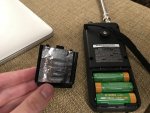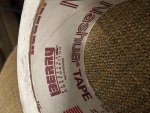Bearcat,
Thanks for your innovation and sharing your find with everyone. It is great to see people taking the initiative to experiment, explore, and solve problems.
These are consumer grade products. No doubt, they met the Part 15 FCC emissions requirements, did the BS protecting so we "can't modify our scanners to receive the cell band," and then called it a day. These are not professional level radios or designed to be sensitive scientific equipment.
And, for most, it's good that they didn't go on an excessive hunt to shield or reduce noise. The scanners are expensive enough as it is.
This is not a fault of the product. It would be nice if something was done at the factory, but, for many things, it's up to us to do our own mods. There's no way they can please everyone.
Electronic devices are inherently noisy. If trying to get extra reach, I would utilize an external antenna placed far away from electric devices. Monitors, displays, data cables, wifi, phones, computers, televisions, etc. are all very noisy. Even radio scanners are noisy.
I suspect some of the problem might be resonance from the radio or even outside sources on the metal case of the batteries, which functions as an antenna just like anything else can.
The SD card and it's data cable, the cable to the display, the clock circuits, a/c audio for the speaker, and even pressing buttons are all sources of noise.
Thanks for the field strip pictures D. I can tell you that on the Whistlers, the batteries, the speaker, and the SD card reader live at the bottom of the unit with essentially no other circuitry and no chips or components. The Whistler also has 4 metal boxes that shield a lot of the device -- much more than in the pictures you posted. I originally figured they did the shield primarily to appease the FCC so we can't "modify" our scanners, but perhaps there is a functional purpose in mind as well.
If anyone is monitoring anywhere near their computer, I should think moving away from all the noise would be a great first step to try. The tape idea is also great, easy, and a good introduction to taking initiative and learning about the hardware.
Addition: Had Uniden substantially advertised "low noise" radio, "no interference," "all noise shielded," etc., then it would be very much proper for them to address this. A good rule of thumb on whether something is a fault of the marketer or not is whether 1) it is a function advertised (or an inherent component to a portable electronic device like a clock or display) and 2) it is present or works properly.



